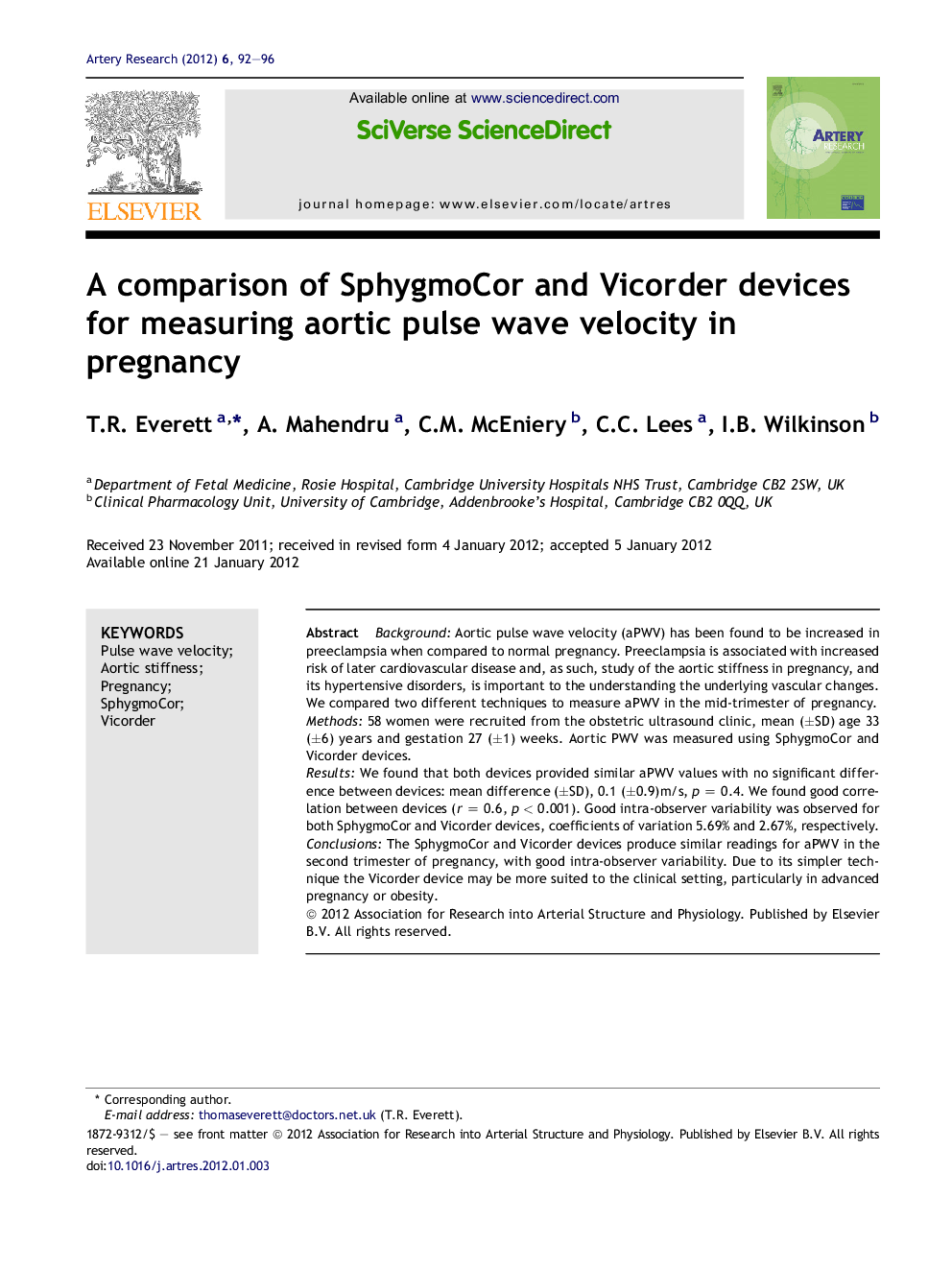| Article ID | Journal | Published Year | Pages | File Type |
|---|---|---|---|---|
| 2891925 | Artery Research | 2012 | 5 Pages |
BackgroundAortic pulse wave velocity (aPWV) has been found to be increased in preeclampsia when compared to normal pregnancy. Preeclampsia is associated with increased risk of later cardiovascular disease and, as such, study of the aortic stiffness in pregnancy, and its hypertensive disorders, is important to the understanding the underlying vascular changes. We compared two different techniques to measure aPWV in the mid-trimester of pregnancy.Methods58 women were recruited from the obstetric ultrasound clinic, mean (±SD) age 33 (±6) years and gestation 27 (±1) weeks. Aortic PWV was measured using SphygmoCor and Vicorder devices.ResultsWe found that both devices provided similar aPWV values with no significant difference between devices: mean difference (±SD), 0.1 (±0.9)m/s, p = 0.4. We found good correlation between devices (r = 0.6, p < 0.001). Good intra-observer variability was observed for both SphygmoCor and Vicorder devices, coefficients of variation 5.69% and 2.67%, respectively.ConclusionsThe SphygmoCor and Vicorder devices produce similar readings for aPWV in the second trimester of pregnancy, with good intra-observer variability. Due to its simpler technique the Vicorder device may be more suited to the clinical setting, particularly in advanced pregnancy or obesity.
